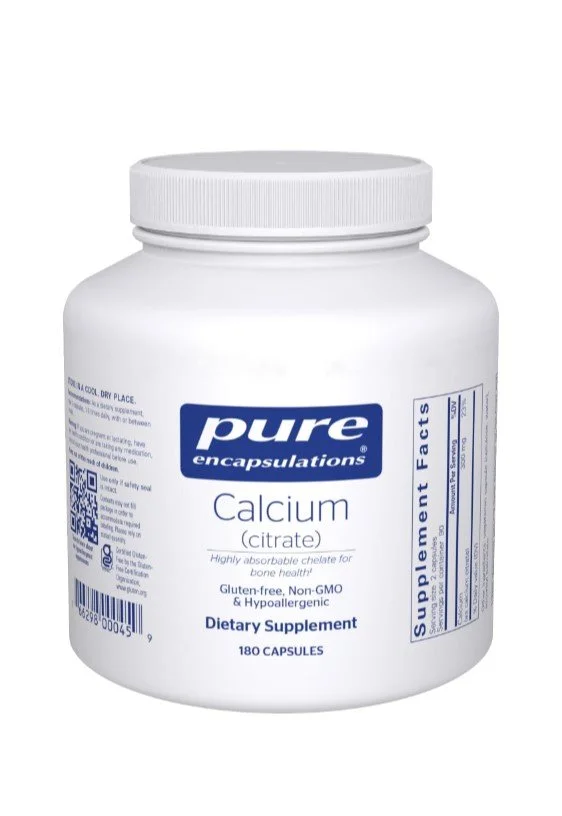Calcium
(revised October 2, 2025)
Definition
Calcium is a mineral in your body and is also classified as an electrolyte. Approximately 99% of calcium can be found in your bones and teeth. The other 1% is in your soft tissue and blood.
Purpose
Calcium has many jobs and most know it for making up the structures of your bones and teeth. But calcium also plays a crucial role in muscle function as well as nerve and heart function.
Symptoms of deficiency
If you don’t get enough calcium, your body will draw on the calcium stored in your bones. A serious deficiency in calcium called hypocalcemia, can lead to muscle cramps, abnormal heart rate, reduced appetite, and/or tingling fingers.
Sources of Calcium
It is best to get calcium from healthy foods such as:
If you need to supplement, use Calcium Citrate.
When/How to take calcium supplements
It's best to take calcium in smaller doses, throughout the day. Smaller doses are often defined as 500 mg or less at a time. Avoid taking with meals high in iron, and avoid taking with iron, magnesium or zinc supplements. If you take magnesium at night, take your calcium at breakfast and lunch.
Notes
Absorption: Ensure you have enough Vitamin D3 and K2 in your diet, so the calcium is absorbed and doesn’t cause other issues. Vitamin D (either from supplements or from diet) is essential for absorbing calcium. K2 drives calcium out of arteries and joints and into bones. Not enough K2 can lead to calcification in joints and arteries.
Bone density is not the same thing as bone strength. Bones are 50% protein, the other 50% is everything else. For healthy bones also eat plenty of collagen building blocks. Bone health is also impacted by many factors including physical activity, size, gender, and hormone levels.
Calcium can interact with your prescriptions. As always, discuss it with your doctor.
USDA Recommended Daily Allowances (RDA) (mg)*:
*The bioavailability of calcium (the amount absorbed by your body) can vary drastically based on the food type, if they are consumed with other nutrients, and the person. For example, spinach has a high concentration of calcium, but due to it also having high oxilates which bind to calcium, you absorb only about 5%. In contrast, you absorb about 50% of the calcium from bok choy. In general, the RDA is for the amount to be consumed, not the amount absorbed, by the average person.
Disclaimer: The nutritional information and advice provided are for general informational purposes only and may contain errors or omissions. This content is not intended to be, and should not be taken as, medical advice. Always consult with your physician, qualified healthcare provider, or licensed dietitian before making any changes to your diet, exercise, supplements, or overall health plan. Never disregard or delay professional medical advice because of information you read here.
Ref:
https://www.healthline.com/health/calcium
https://www.mayoclinic.org/drugs-supplements-vitamin-d/art-20363792
https://odphp.health.gov/sites/default/files/2019-09/Appendix-E3-1-Table-A4.pdf
https://www.mayoclinic.org/healthy-lifestyle/adult-health/in-depth/bone-health/art-20045060



